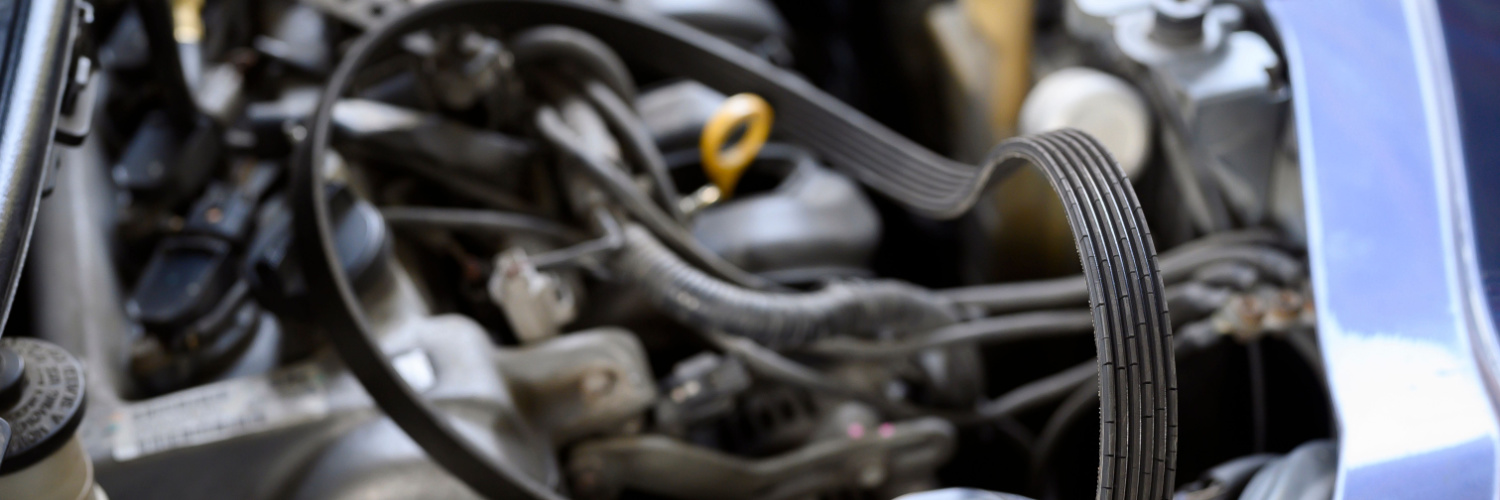Serpentine Belt Service in Converse, TX

What Is a Serpentine Belt in Automobiles?
Your car’s serpentine belt is a component that plays a significant role in keeping your vehicle running smoothly. It is a long rubber belt that powers various engine peripherals, including the alternator, power steering pump, air conditioning compressor, and water pump.
Unlike older vehicles that used multiple belts for different accessories, modern cars have a single serpentine belt that winds through several pulleys to drive all these components efficiently.
Differences Between a Serpentine Belt and a Timing Belt
Serpentine Belt:
- The serpentine belt is responsible for driving peripheral components in the engine, such as the alternator, power steering pump, air conditioning compressor, and water pump.
- It is a long rubber belt that winds through multiple pulleys to transfer power efficiently.
- The serpentine belt is relatively easy and cost-effective to replace.
- Its failure can lead to the loss of power steering, charging system issues, overheating, and other problems with peripheral components.
Timing Belt:
- The timing belt, also known as the camshaft belt, is crucial for controlling the engine’s timing and synchronizing the rotation of the crankshaft and camshaft.
- It is made of reinforced rubber with teeth on the inner side to engage with the gears of the camshaft and crankshaft.
- The timing belt must be replaced at specific intervals recommended by the vehicle manufacturer, typically between 60,000 to 100,000 miles.
- Failure of the timing belt can result in severe engine damage, as it can cause the pistons and valves to collide.
While the serpentine belt powers peripheral components in the engine, the timing belt controls the engine’s timing and ensures the proper operation of the internal components.
Both belts play critical roles in the performance and functionality of the vehicle, and it is important to follow the manufacturer’s guidelines for replacement intervals to prevent unexpected failures and potential damage.
How Do Serpentine Belts Work?
Serpentine belts are designed to transfer the engine’s rotational power to various peripheral components in the car. They are cost-effective and relatively easy to replace. These belts drive the power steering pump, alternator, and air conditioner compressor. Some models also use the serpentine belt to drive the water pump, which circulates coolant to keep the engine cool.
The proper functioning of these peripheral components is vital to the overall performance of your vehicle, even though they are not directly related to engine combustion.
What Happens if the Serpentine Belt Breaks While Driving?
Although serpentine belts are durable, they can deteriorate over time and eventually fail. If the serpentine belt breaks while you’re driving, you may experience the following issues:
- Sudden loss of power steering, making it difficult to steer the vehicle.
- The alternator stops supplying power to electrical systems, causing the battery to drain.
- The water pump stops circulating engine coolant, leading to overheating.
- The vehicle may go into “limp mode,” limiting its performance.
- The air conditioner stops working, making driving uncomfortable in hot weather.
What Are the Signs of a Failing Serpentine Belt?
To prevent sudden belt failure, it’s important to watch for signs of wear and tear. Here are six indications that your serpentine belt may be deteriorating and in need of replacement:
- Squealing noises coming from the engine.
- Cracks, fraying, or glazing on the belt’s surface.
- Visible signs of wear or damage.
- Accessories not functioning properly.
- Engine overheating.
- Sudden loss of power steering or battery charging issues.
How Often Does the Serpentine Belt Need to Be Replaced?
Although car manufacturers may not specify specific mileage intervals for serpentine belt replacement, it is generally recommended to replace it every four to five years or between 45,000 to 50,000 miles. However, driving conditions and habits can impact the lifespan of the belt. Extreme weather conditions and excessive idling can lead to faster deterioration.
Get Expert Serpentine Belt Replacement in Converse, TX at Larson’s Automotive
If you’re experiencing serpentine belt issues or are due for a replacement, Larson’s Automotive is here to help. As a leading automotive workshop in Converse, TX, we provide comprehensive automotive services for all vehicles. This includes expert serpentine belt replacement services.
Our experienced team of technicians is dedicated to keeping your car operating smoothly and preventing costly issues through effective maintenance services. We prioritize building long-term relationships with our loyal clients by delivering reliable repairs and exceptional customer service.
Contact us today at 210-858-8507 or schedule an appointment for serpentine belt replacement and any other automotive needs. Trust Larson’s Automotive for expert service and peace of mind on the roads of Converse, TX.

